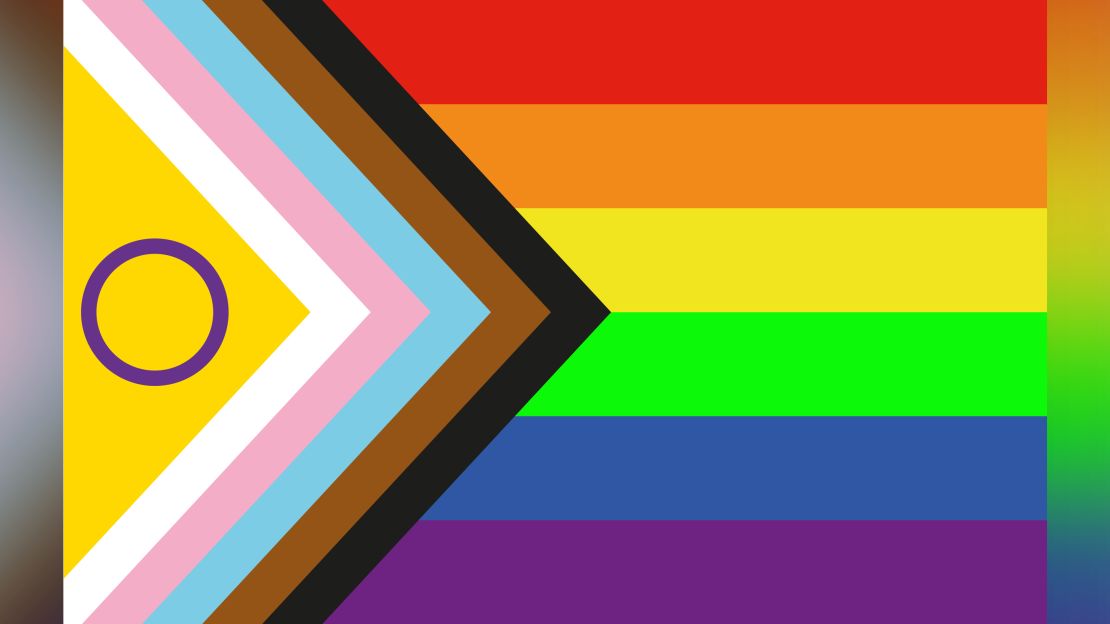Formula One driver Lewis Hamilton has been widely praised after showing his support for the LGBTI community during a practice session on Friday for the Qatar Grand Prix.
Hamilton wore a helmet featuring the Pride Progress Flag, a redesigned and more inclusive version of the traditional rainbow flag, and emblazoned with the words “We Stand Together.”
The flag features additional black and brown stripes to highlight the oppression of people of color, as well as pink and blue stripes for the trans flag and a purple circle on a yellow background, which is the intersex flag.
Although the Pride Progress Flag was initially designed by American artist Daniel Quasar in 2018, it was British intersex activist and columnist Valentino Vecchietti who finalized the version seen on Hamilton’s helmet, which includes the intersex flag.
“It means everything,” Vecchietti told CNN. “I can’t express what an amazing, massive, massive thing Lewis Hamilton has done. And I feel emotional talking about it, because we are so hidden and stigmatized as a population.”
According to the United Nations Free and Equal campaign, up to 1.7% of the global population is intersex, or does not have sex characteristics that conform to “typical binary notions of male and female.”
Highlighting the erasure of intersex people both within the LGBT+ movement and in society as a whole, Vecchietti said Hamilton’s gesture would also raise awareness of the vilification of intersex athletes like Caster Semenya and Dutee Chand in sport.
“We have to remember that young kids with intersex variations growing up in school see all this media,” she said. “As an intersex person myself, at school, I grew up with so much stigma and shame and feeling I had to keep it hidden … Lewis Hamilton has done something amazing. He’s given me a platform to begin these conversations on a much larger scale.”
Vecchietti, the founder of Intersex Equality Rights UK, designed the flag with the support of Stonewall and the LGBT Consortium, and her design quickly went viral after it was shared on social media in May.
Hamilton’s decision to wear the flag on his helmet also comes at the end of Trans Awareness Week, while Saturday marks the International Transgender Day of Remembrance.
Racing Pride, which aims to promote LGBTQ+ inclusion in motorsport, also praised Hamilton, calling the helmet “a magnificent and powerful gesture of solidarity.”

The Qatar Grand Prix has come under scrutiny due to the country’s human rights record, particularly towards LGBTI individuals. Homosexuality is illegal and punished with a fine or a prison sentence, and trans people cannot legally change gender.
According to a report into state-sponsored homophobia by Lucas Ramón Mendos of the human rights group ILGA World, Qatar “runs Sharia courts, where technically it is possible that Muslim men could be put to death for same-sex sexual behaviours.”
However, the report adds: “It does not appear that any person has been executed for this reason or at all.”
In an interview with CNN’s Amanda Davies in 2017, Nasser Al Khater, the chief executive of Qatar’s 2022 World Cup organizing committee, said: “We are not putting any restrictions on any nationality or anybody with respect to their gender, race, orientation, religion to attend this World Cup.”
According to Reuters, Hamilton told reporters in Qatar on Thursday that it “seems to be deemed as one of the worst in this part of the world” for human rights violations, and said sports were “duty bound to raise awareness for these issues.”
The sportsman previously spoke up in support of LGBTI rights in Hungary ahead of the Hungarian Grand Prix in August. He is expected to wear his Pride helmet for the actual competition in the Qatar Grand Prix, which will take place on November 21.
For Vecchietti, this is monumental in terms of representation for the intersex community.
“I wished and hoped for this sort of visibility, as you always do,” she said. “But I had no idea that somebody as huge as Lewis Hamilton would make this fantastic statement of solidarity.”





